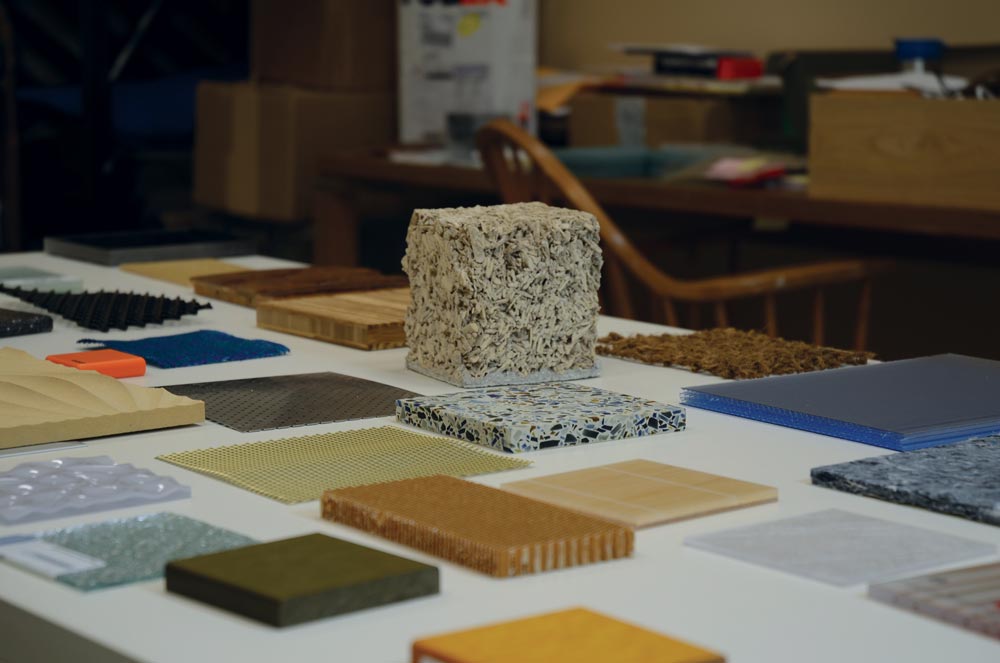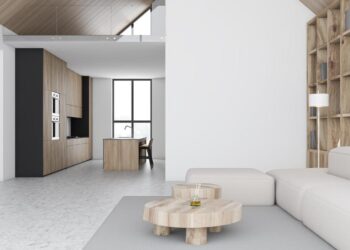In an increasingly digital and visually saturated world, the senses beyond sight are often overlooked in the design process. Yet, the most profound and memorable experiences are those that engage us on multiple levels. This is the essence of Sensory Design, a holistic approach that deliberately integrates all five senses to create a richer, more human-centric experience. At the heart of this movement is a focus on tactile materials, the textures and surfaces we physically touch, feel, and interact with. These materials are not just functional; they are the silent storytellers of an environment, conveying messages of comfort, luxury, durability, and authenticity. They can evoke powerful emotions, trigger memories, and fundamentally alter our perception of a space or product. This article will delve into the critical role of tactile materials, exploring the psychology behind the sense of touch, detailing the key properties that define a tactile experience, and showcasing how designers across various fields are harnessing this powerful tool to create truly impactful and unforgettable designs.
What Is Sensory Design?

For decades, design has been overwhelmingly dominated by visual aesthetics. The focus has been on what looks good, with less emphasis on how a space feels, smells, or sounds. Sensory design, however, proposes a more comprehensive philosophy. It acknowledges that humans are multi-sensory beings and that our experience of the world is a complex tapestry woven from all our senses. While sight is a primary sense, touch, or haptics, is arguably the most intimate and foundational. It’s the first sense we develop and the one we use to physically explore and understand our environment. The feel of a smooth, cold stone, the warmth of a wooden countertop, or the softness of a plush blanket are not incidental details; they are crucial components of our lived experience. By intentionally curating these tactile experiences, designers can craft spaces and products that feel more authentic, comfortable, and engaging.
The Science of Touch
The sense of touch is far more than a simple receptor for physical contact. It’s a complex system that is deeply intertwined with our emotions, memory, and cognitive processes. This is supported by a growing body of research in fields like psychology and neuroscience.
A. The Role of Haptics: Haptics is the science of touch, and it encompasses both active and passive touch. Active touch is when we purposefully explore an object, such as running our hand over a textured surface. Passive touch is when we simply feel something against our skin, like the warmth of a chair cushion. Both forms of haptics provide our brains with vital information about the world, informing us of an object’s temperature, weight, hardness, and texture. This information helps us build a mental model of our environment.
B. Touch, Emotion, and Memory: Our tactile experiences are directly linked to our emotional state. The soft, gentle feel of a material can evoke feelings of comfort and security, while a rough, coarse texture might suggest a connection to nature or evoke a feeling of rusticity. Studies have shown that when we touch a product, we form a stronger emotional connection to it and are more likely to remember it. This is why the tactile quality of product packaging, for example, is so critical to a brand’s identity. The feeling of unboxing a premium product can be as important as the product itself.
C. Texture and Perception: The texture of a material can even influence our perception of its value and quality. A heavy, smooth, and cold metal surface, such as a high-end appliance, often conveys durability and sophistication. Conversely, a lightweight, flimsy, and rough material might be perceived as cheap or low-quality. This is not just a cultural association; it’s a hardwired response to the physical properties of objects. Designers who understand this can manipulate these perceptions to create a desired impression.
The Pillars of Tactile Material Selection
Choosing the right tactile materials for a project is a deliberate and strategic process. It requires a designer to think beyond the visual and consider a material’s full range of physical properties. The following pillars serve as a framework for this selection process.
A. Material Properties: The fundamental nature of a material is the starting point. Designers must consider if the material is natural (e.g., wood, stone, wool) or synthetic (e.g., plastic, engineered composites). Natural materials often have inherent irregularities and a sense of authenticity that is difficult to replicate. The temperature of a material also plays a huge role. Wood feels warm to the touch because it’s a poor thermal conductor, while stone and metal feel cold because they are efficient conductors. This distinction is crucial for spaces where physical contact is frequent, such as seating or countertops.
B. Texture and Pattern: Texture is the surface quality of a material that we perceive through touch. It can be smooth, rough, soft, hard, bumpy, or velvety. The visual pattern on a material is not the same as its texture, but the two often work together to create a cohesive sensory experience. A highly textured material, like exposed brick or a woven textile, can add a layer of complexity and visual interest. In contrast, a smooth, polished surface, like glass or marble, can create a sense of cleanliness and modernity. The right texture can influence a person’s mood, from the calming effect of a soft, irregular weave to the energizing feel of a rough, natural stone.
C. Weight and Density: The perceived weight of an object is a powerful indicator of its quality and durability. A heavy, solid door handle feels more substantial and well-made than a light, hollow one. Similarly, a chair that feels dense and grounded gives a sense of stability and permanence. Designers can use this to their advantage, choosing materials with a higher density to create a feeling of luxury and craftsmanship. Conversely, a lighter material might be chosen to convey a sense of modernity or to meet the functional need for portability.
D. Thermal Properties: The way a material absorbs and dissipates heat is a key tactile property. Materials with high thermal mass, like concrete or tile, feel cold to the touch and are excellent for cooling down a space. They are often used in hot climates. Conversely, materials with low thermal mass, such as wood, cork, or felt, feel warmer and are better suited for creating cozy, inviting spaces. The conscious use of these properties can dramatically impact the comfort and perception of an environment.
E. Acoustic Properties: While not strictly a tactile quality in the traditional sense, a material’s acoustic properties contribute significantly to the sensory experience of a space. The sound of footsteps on a hard tile floor is very different from the muffled sound on a soft carpet. A room with many hard, reflective surfaces can sound harsh and echoey, while one with soft furnishings and textured walls can feel quiet and calm. Choosing materials that absorb or reflect sound is an integral part of designing a comfortable and pleasant environment.
Tactile Materials Across Different Design Fields
The application of tactile design is not limited to a single field. It is a universal principle that is being embraced by designers in a wide variety of industries to enhance the user experience.
A. Interior Design: This is perhaps the most obvious application of tactile design. Interior designers use tactile materials to create a mood and a sense of place. A living room might feature a plush velvet sofa for comfort, a smooth wooden coffee table for warmth, and a textured woven rug to ground the space. The choice of flooring, from the cool feel of stone in a spa-like bathroom to the soft, warm feel of a carpet in a bedroom, is a key tactile decision. The walls themselves can be tactile, with options like exposed brick, textured plaster, or acoustic panels that invite touch.
B. Product Design: From consumer electronics to household tools, product designers use tactile materials to improve usability and create brand identity. The soft-touch finish on a smartphone or the rubber grip on a kitchen appliance makes it more comfortable and secure to hold. The satisfying click of a mechanical keyboard or the subtle vibrations of a gaming controller are forms of haptic feedback that enhance the user’s interaction. The materials chosen for a car’s interior—the feel of the leather on the steering wheel, the texture of the dashboard—are crucial for creating a premium and comfortable driving experience.
C. Fashion and Textiles: The entire field of fashion is built on tactile design. The feel of a fabric against the skin—the softness of silk, the scratchiness of wool, the lightness of linen—is fundamental to how we choose and wear clothing. Designers select fabrics not only for their visual appeal but for their drape, weight, and texture. The tactile quality of textiles is also a major factor in home goods, such as blankets, curtains, and upholstery, where the goal is often to create a feeling of warmth, comfort, and luxury.
D. Urban and Landscape Design: Even in public spaces, tactile materials play a vital role. The feel of a park bench made of smooth, polished wood is different from one made of rough, weathered stone. The texture of a pavement can guide a visually impaired person, while the choice of natural materials in a public park can create a sense of being connected to nature. The cold, solid feel of concrete in a modern plaza versus the warm, organic feel of a wooden deck in a waterfront area creates entirely different emotional responses and user experiences.
The Psychological Impact of Texture and Material

The power of tactile materials lies in their ability to trigger subconscious psychological responses. Designers who are fluent in this language can craft environments that subtly influence behavior and emotion.
A. Comfort and Security: Materials that are soft, plush, and warm, like velvet, wool, and felt, create a feeling of comfort and security. They evoke a sense of coziness and relaxation, making them ideal for living rooms, bedrooms, and lounges. The feeling of being wrapped in a soft blanket is a primal source of comfort, and designers can replicate this feeling through the use of soft furnishings and textiles.
B. Connection to Nature: Rough, natural materials like wood, stone, cork, and certain types of woven fabrics help to ground us and connect us to the natural world. In a world dominated by smooth, synthetic surfaces, these textures offer a refreshing and authentic experience. They can create a feeling of peace and tranquility, making them perfect for biophilic design—the practice of incorporating nature into built environments.
C. Luxury and Quality: Materials that are heavy, dense, and finely finished, such as polished metals, high-grade leather, and fine woods, are often associated with luxury and high quality. The smooth, seamless surface of a marble countertop or the precise joinery of a piece of handcrafted furniture conveys a sense of craftsmanship and permanence. This tactile feedback reinforces the perceived value of a product or a space.
The Future of Tactile Design
As technology and sustainability become more integrated into our lives, the future of tactile design will continue to evolve in exciting ways.
A. Haptics in Technology: Haptic feedback is already a key feature of smartphones and gaming controllers, but its use will become even more sophisticated. We can expect to see more advanced haptic technologies that can replicate a wider range of textures and sensations, allowing us to “feel” digital objects and environments in a more realistic way.
B. Biomimicry and Sustainable Materials: The future of tactile materials is deeply intertwined with sustainability. Designers are increasingly looking to biomimicry—the practice of designing products and systems that are inspired by nature—to create new, sustainable materials with unique tactile properties. This includes materials grown from mycelium (fungus) or derived from agricultural waste, which offer organic textures and a low environmental footprint.
C. Customization and Personalization: Advances in manufacturing technology, such as 3D printing and robotic fabrication, will allow for a greater degree of customization in the tactile properties of materials. Designers will be able to create bespoke textures and patterns tailored to a specific project or even an individual’s preferences, leading to a new era of highly personalized sensory design.
Conclusion
The deliberate use of tactile materials is no longer an optional extra in the design process; it is a fundamental necessity. By engaging the sense of touch, designers can move beyond the purely aesthetic to create spaces and products that are more meaningful, memorable, and human. The power of a material lies not just in how it looks, but in how it feels, and in that feeling lies the potential to create a truly rich and impactful experience.







Discussion about this post